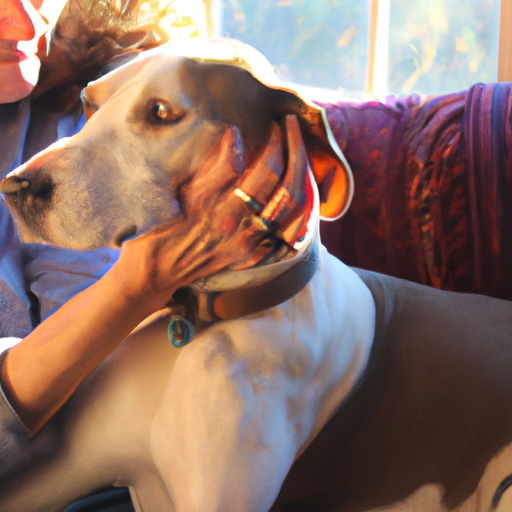As an ardent pet lover and a devoted caregiver, you may have noticed your dog’s ears going back when you pet him. It’s a gesture that’s both intriguing and endearing. But what does it mean? Is it a sign of discomfort or a mark of affection? Understanding these subtle cues is crucial to strengthen the bond with your furry friend.
Table of Contents
- Understanding Your Dog’s Body Language
- Reasons Why Your Dog’s Ears Go Back
- How to Respond to Your Dog’s Signals
- Frequently Asked Questions
Key Takeaways:
- Dogs communicate their feelings via body language, especially through their ears.
- Dogs’ ears go back when they’re relaxed, scared, submissive, or showing affection.
- It’s important to understand these signals to respond appropriately.
Understanding Your Dog’s Body Language
Dogs, unlike humans, rely heavily on body language to communicate. They use different parts of their bodies, including their ears, to express a wide range of emotions. Researchers suggest that a dog’s ears are one of the most expressive parts of its body. Understanding these signals can help you better cater to your pet’s needs and emotions.
One of the most common signals is when a dog’s ears go back. This gesture can mean a variety of things, depending on the context and accompanying body language.
Reasons Why Your Dog’s Ears Go Back
There are several reasons why a dog might pull its ears back.
-
Relaxation: When a dog is relaxed, its ears will often lean back slightly. This is a sign that your pet is comfortable with you petting him.
-
Fear or Anxiety: Dogs also pull their ears back and flatten them against their head when they’re scared or anxious.
-
Submission: Dogs will pull their ears back as a sign of submission. This is common when they’re interacting with a more dominant dog or human.
-
Affection: Lastly, dogs might pull their ears back as a sign of affection. This is often accompanied by other signs of love and affection, such as wagging tails and excited behavior.
You can learn more about these behaviors in these articles about dog body language and understanding your dog’s signals.
How to Respond to Your Dog’s Signals
Responding appropriately to your dog’s signals is crucial. It not only ensures your pet’s comfort but also strengthens your bond with them. If your dog’s ears go back because he’s relaxed and comfortable, continue petting him gently.
If your dog’s ears go back because he’s scared or anxious, try to remove him from the situation causing his distress. If he’s showing submission, respect his boundaries and give him some space.
When your dog pulls his ears back as a sign of affection, you can reciprocate his feelings by petting him or giving him a treat. This positive reinforcement can help deepen your bond.
Frequently Asked Questions
-
What should I do if my dog’s ears are always back?
If your dog’s ears are always back, it might be a sign of chronic fear or anxiety. You should consult with a veterinary behaviorist for advice. -
Can I train my dog to express his feelings differently?
While it’s possible to train your dog to behave differently, it’s not recommended to try and change their natural forms of communication. -
Are certain breeds more likely to pull their ears back?
Some breeds with more mobile ears, like Labradors and Beagles, may be more likely to pull their ears back than others.
Understanding your dog’s body language is a journey of discovery that helps you forge a stronger, more empathetic connection with your furry friend. So, the next time you notice your dog’s ears going back when you pet him, you’ll know exactly what he’s trying to tell you.
Remember, every dog is unique. So, keep observing, keep learning, and most importantly, keep loving your four-legged family member. They might not speak our language, but their love is as pure and profound as it gets.



